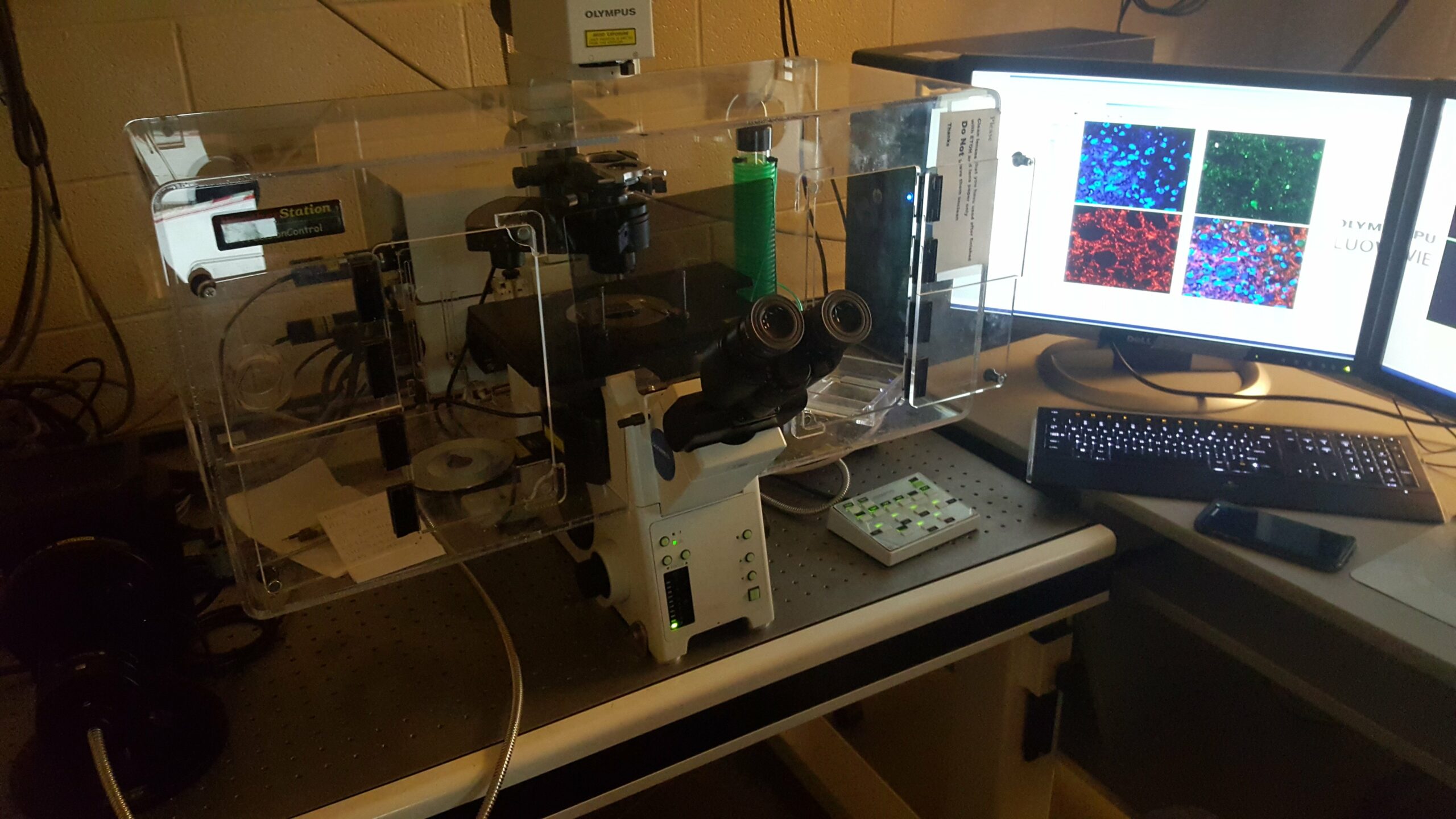Continuing our discussion on Fluorescence Resonance Energy Transfer (FRET), in this article I will introduce various FRET analysis techniques in cell biology applications.
Due to the limitations stated in the previous article, particularly spectral crosstalk, one should use as many different FRET analysis techniques as possible to establish the methodology for a given experiment. While the established list of analysis techniques can be quite extensive, here I will summarize 5 common approaches and outline the advantages and disadvantages for each.

Sensitized Emission
Also known as two-color ratio imaging. The donor fluorophore is excited, and the signal is collected by using emission filters chosen for the donor fluorescence and the acceptor fluorescence.
Advantages:
Simple to configure on widefield fluorescence microscopes, which are available in most labs. Useful for rapid dynamic experiments in which FRET signals are large due to the ability to acquire both images simultaneously.
Disadvantages:
Due to the spectral crosstalk between the donor and acceptor fluorophores, it is difficult to obtain unambiguous FRET results, and extensive controls using samples containing only the donor, only the acceptor, and both the donor and acceptor, are needed.
In addition, as considerable image processing is needed to subtract crosstalk components, the resulting increase in noise level in the images makes weak FRET signals hard to detect.
Due to these reasons, sensitized emission is mostly used for FRET detection in engineered biosensors (such as Cameleon as discussed in the previous article) where the FRET dynamic range is large and the donor to acceptor ratio is fixed as 1:1.
Acceptor Photobleaching
The concept of acceptor photobleaching is based on the quenching of donor fluorescence during FRET as some of the donor energy is transferred to the acceptor. By photobleaching the acceptor during FRET (~10% of its initial value), this quenching effect is irreversibly eliminated and results in an increase in donor fluorescence that can be captured by a variety of microscopes (confocal, widefield, or spinning disk).
The FRET efficiency is calculated by normalizing the difference in donor intensity before and after acceptor photobleaching to donor intensity after acceptor photobleaching.
Advantages:
Simple to configure and can be performed using only a single sample.
Disadvantages:
Can only be used once per cell as acceptor photobleaching is destructive and irreversible. This limits its application to those experiments not involved with dynamic measurements. Nevertheless, it is almost always worthwhile to perform an acceptor photobleaching measurement at the end of an experiment.
Fluorescence Lifetime Imaging Microscopy (FLIM)
FLIM utilizes a similar concept as acceptor photobleaching, but additionally relies on the exponential fluorescence decay that occurs in all fluorophores over a nanosecond timescale. For a FLIM analysis, the amount of donor fluorescence quenching in the presence of FRET is measured as the decrease in fluorescence decay time of the donor.
Advantages:
The donor can be coupled to non-fluorescent acceptors, hence eliminating spectral crosstalk between donor and acceptors. As a result, FLIM provides an unambiguous value of the FRET efficiency and also expands the possible donor/acceptor pairs available to investigators.
Disadvantages:
While FLIM is the dominant approach for FRET imaging, this analysis technique is limited by the fact that the instrumentation to measure the nanosecond lifetimes is expensive and not yet widely available to most labs. In addition, localized environmental factors, such as autofluorescence or a change in pH, can also shorten the measured fluorescence lifetime and lead to artifacts.
Spectral Imaging
Spectral imaging is a variation of sensitized emission that collects the entire emission spectrum containing both donor and acceptor fluorescence following donor excitation. In the presence of FRET, photobleaching the acceptor will shift the entire emission spectrum, where the differences in the peaks correlates with the FRET efficiency.
Advantages:
Well-established systems are available on many commercial confocal microscopes.
The collection of the entire fluorescence spectrum enables the separation of overlapping spectra by using not just the emission peaks but also the distinct shapes of the spectral tails, which in turn allows the relative levels of donor and acceptor fluorescence to be determined.
Disadvantages:
Reduced signal-to-noise ratio associated with acquiring the complete spectrum rather than collecting it through two channels with a filter-based system.
Time-Resolved FRET (TRF)
TRF takes advantages of the differences in fluorescence decay time between the donor and acceptor fluorophores. Commercially available rare earth lanthanides such as Terbium Tb3+or Europium Eu3+bound to a chelate or cryptate organic molecule are most common donors used in TRF. They provide bright fluorophores with lifetimes 1–2 ms, allowing for a delay of 50–150 μs between the excitation and measurement of the emission signal. Such delayed, or “time-resolved” measurement minimizes the background due to the dissipation of short-lived fluorescence characterized with nsec and μsec lifetimes.
Advantages:
High signal to noise ratio due to low background. Narrow emission spectrum of lanthanides allows for additional boost in FRET signal via appropriate narrow-band excitation and emission filters
Disadvantages:
Requires an additional wash step to remove unbound fluorescent reagents prior to FRET measurement, which increases reagent use, time to complete the assay, and limits the ability to miniaturize the system.
Editor’s Note: This article concludes our series on the techniques for studying protein interactions (For review, here are the articles on PLA and BRET.)
Which of these techniques do you prefer? Do you have any tricks on performing a successful experiment? Let us know in the comment section below!
Lastly, if you’re planning a FRET experiment, review published data on BenchSci to find the best antibody for your study condition.
{{cta(‘7aa72892-836c-43e3-9455-b7e17787c762’)}}